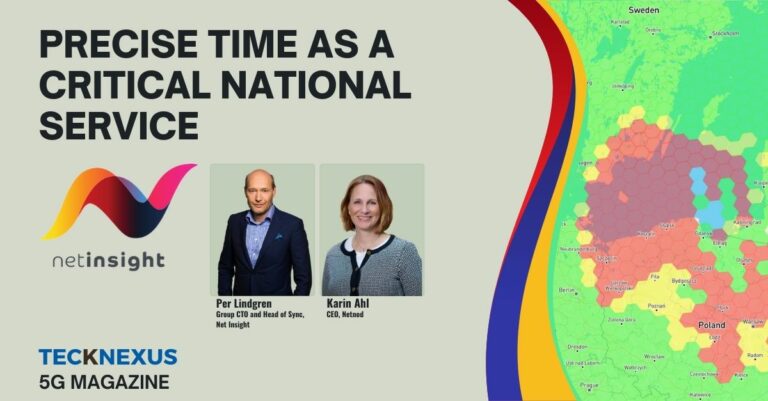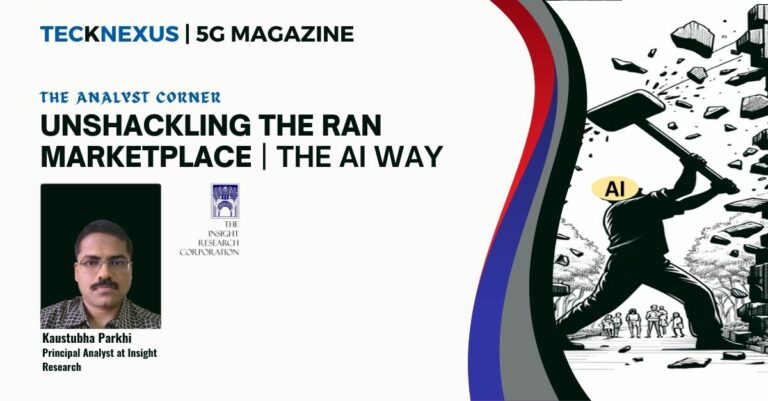What does artificial intelligence (AI) mean to you?
The precociously perceptive GPT and its competitors? Or the omnipresent Chat Box? Or driverless cars? Or the tantalizingly attractive virtual reality (VR) gear? Or the threat of our world being turned upside down?
AI is all of this. AI is also much more than all of this. AI is in-your-face like the examples listed above. AI also works quietly behind the scenes, where its value addition is equally, if not more, pivotal.
Nowhere is this value addition more evident than in the radio access network (RAN). AI is changing the RAN, at the root of its technology, and at the heart of its business.
Yes, the RAN. That final bastion of proprietary hardware and walled gardens. Where established vendors will look towards perpetuating their dominance, knowing that they hold the keys to the most critical aspects of the user-experience; while their customers, the telcos will hesitate to take risks, lest it affects network performance.
Over the past decade, the telcos have been trying hard to liberate themselves from their historical hesitations and have been lending a hand to the diversification of the network equipment vendor marketplace. The past few years have witnessed the progressive disaggregation of the network and the network elements through software defined networking (SDN) and network functions virtualization (NFV) (and later the cloud-native network functions (CNF)) technologies respectively. It cannot be denied that these initiatives have met with reasonable success on many fronts.
But the RAN continues to hold on more stubbornly to the old-word vendor-dominated ways than other network elements, and understandably so. Clearly, additional push is required to unshackle the chains.
This push is being delivered by AI.
Insight Research, in its report “AI and RAN – How fast will they run?” identifies unmistakable signs of the RAN vendor place undergoing qualitative changes, thanks to AI.
Here is what we found.
There are real use cases for AI in RAN that have been successfully deployed by telcos and vendors in the areas of RAN energy management, traffic optimization, coding, and caching.
The market for AI deployment in the RAN traffic optimization use-case is forecast to grow at an impressive compounded annual growth rate (CAGR) of 31.5% during 2023-2028.
The above growth will be delivered on the back of several path-breaking initiatives – most notably, the clarity and the framework provided by the Open RAN initiative for the inclusion of AI and machine learning (ML) constructs in the RAN framework. The RAN intelligent controller (RIC), for instance, has brought out a totally new dimension to how networks can be designed, managed, and optimized.
How do the vendors look at it?
The architectural impact of the RIC is profound enough for principal mainstream vendors such as Nokia, Samsung, and Ericsson to have made it their own. That is not surprising. In any case, these companies have been extremely proactive in the incorporation of AI and ML in several of their RAN modules and functionalities.
What is intriguing are the profiles and the backstories of other entrants in the RIC domain.
In VMware, which boasts of an exhaustive partner ecosystem, we have the company with the resources, pedigree and the intent to dig its heels in the RAN marketplace. To some extent, the same can be said of Juniper and Qualcomm. Juniper has in fact entered into a strategic partnership with Rakuten Symphony by lending its RIC to the latter. RIC vendors also include Mavenir, a company that has been persistent in its efforts to mainstreaming VNFs, and Capgemini, the master of all trades! Fujitsu has emerged as another dark horse- with a complete spectrum of Open RAN suite – radios, transport, virtualized central unit (vCU)/ distributed unit (DU) and service management and orchestration (SMO). RIC thus opens the market beautifully for companies to find more than a toehold in the extremely high entry-barriered RAN marketplace.
So is it only the bigger players that get to play? No.
RIC vendor diversity is just one aspect of the opening of the marketplace. The partner ecosystem of these vendors has some rather interesting and pathbreaking entrants. The common thread that runs along these company profiles is their mastery over AI, their ability to leverage AI to solve RAN challenges, and their smartness to capitalize on the opening provided by Open RAN for entering the RAN developer marketplace.
Let us hear their stories.
Cohere Technologies has smartly leveraged the Delay-Doppler domain. Some context surrounding the phrase ‘Delay-Doppler’ is required. It is easy to misinterpret this phrase as a special use-case of the Doppler effect – it is not. Cohere uses the word ‘delay’ as a shorthand for time division duplexing (TDD) and the word ‘Doppler’ for frequency division duplexing (FDD). Cohere postulates that tapping the TDD and FDD simultaneously for time delay and Doppler effect provides a unique profile of the signal path from the antenna to the user – specifically, the scattering of signal and its causes can be identified with pin-pointed accuracy and near-real time response. All of these is possible thanks to ML. Cohere has developed its Universal Spectrum Multiplier (USM) on the bedrock of Delay Doppler and then ported it as xApp over RIC from VMware, among others. USM involves decoupling RAN intelligence (specifically for multiuser multiple input multiple output (MU-MIMO) scheduling, including dynamic user pairing and precoding) from the DU, running it as a cloud service atop VMware RIC. It is safe to surmise that this would have been difficult to achieve unless the ballast of ML were available.
The entire business model of Aira Technologies is based on the conviction about the ability of ML in improving wireless design flexibility, increasing wireless design speed, modularizing functional stacks and harmonizing disparate nomenclatures, terminologies and assumptions characterizing wireless design. Aira claims that beyond channel estimation and scheduling, its channel prediction xApp offers tangible benefits in the area of energy efficiency.
Rimedo Labs owes its origins to the Institute of Radiocommunications of the Poznan University of Technology from where it was spun-off. Its TS xApp plays a crucial role in determining the placement of UE in specific cells through the handover process. Unlike standard handover mechanisms which treat all users alike and use the average KPI values to determine handover or cell reselection; Rimedo’s TS xApp utilizes policies set by the O-RAN Alliance to guide specific UEs based on a variety of factors.
Net AI’s xUPscaler traffic predictor xApp integrates proprietary AI models to analyze both historical and real-time network traffic data to predict future traffic volumes at the base station. The xApp employs AI to parse metadata that encapsulates traffic consumption, measured by uplink and downlink data volumes, into demands of individual services comprising these aggregates. It also projects future traffic consumption over customizable time horizons.
Auptim from AirHop is a family of xApps and rApps that leverage the power of ML for traffic prediction and optimization. The optimization can be done at various levels – physical cell identifier (PCI), random access channel (RACH) and mobility robustness optimization (MRO).
Also of significance is PI works, that offers PCI Optimizer rApp to avoid PCI collision and confusion.
Aspire Technologies is known for supporting Deutsche Telekom in its SMO development. Aspire tackles an important challenge that can be viewed more as a side effect of RAN virtualization – excessive decentralization. Aspire has developed a weather check for the RIC app market place in form of the Anomaly Detection rApp. It has thus tackled the need to govern the app marketplace.
Thus there are newbies and upstarts – and some of them are bound to have a profound impact on RAN disaggregation and management – all thanks to AI and ML.
Is this only about RIC and xApps and rApps then?
RIC is not the only good news niche players looking to leverage AI in RAN. It should be understood that use-cases like energy management, channel estimation, caching and MIMO that extensively deploy AI predate RIC.
There are players like DeepSig that offer their spectrum awareness solution and heavily leverage AI. There is Pegerine from Opanga Networks, that resides in the Core and aims at maximizing RAN performance by adapting transmission control protocol (TCP) parameters in addition. Then there are RIC sceptics like ZTE and Huawei, that offer their distinctive flavor of alternative solutions.
A final mention has to be made of an exciting entrant – Nvidia. It is somewhat inevitable that Nvidia figure in the list of AI vendors, although it is unusual to associate the company with the RAN domain. Nvidia’s AI-on-5G platform is designed to transform 5G gNBs into edge data centers, catering to AI workloads for both telecommunications companies and enterprises. This platform integrates 5G vRAN as a software workload, operating concurrently with other AI workloads, leveraging Nvidia’s graphics processing units (GPU) acceleration expertise to enhance edge computing capabilities.
In conclusion it can be said that AI is dismantling the RAN walled-garden, layer-by-layer, xApp-by-xApp, rApp-by-rApp and edge-by-edge.















































